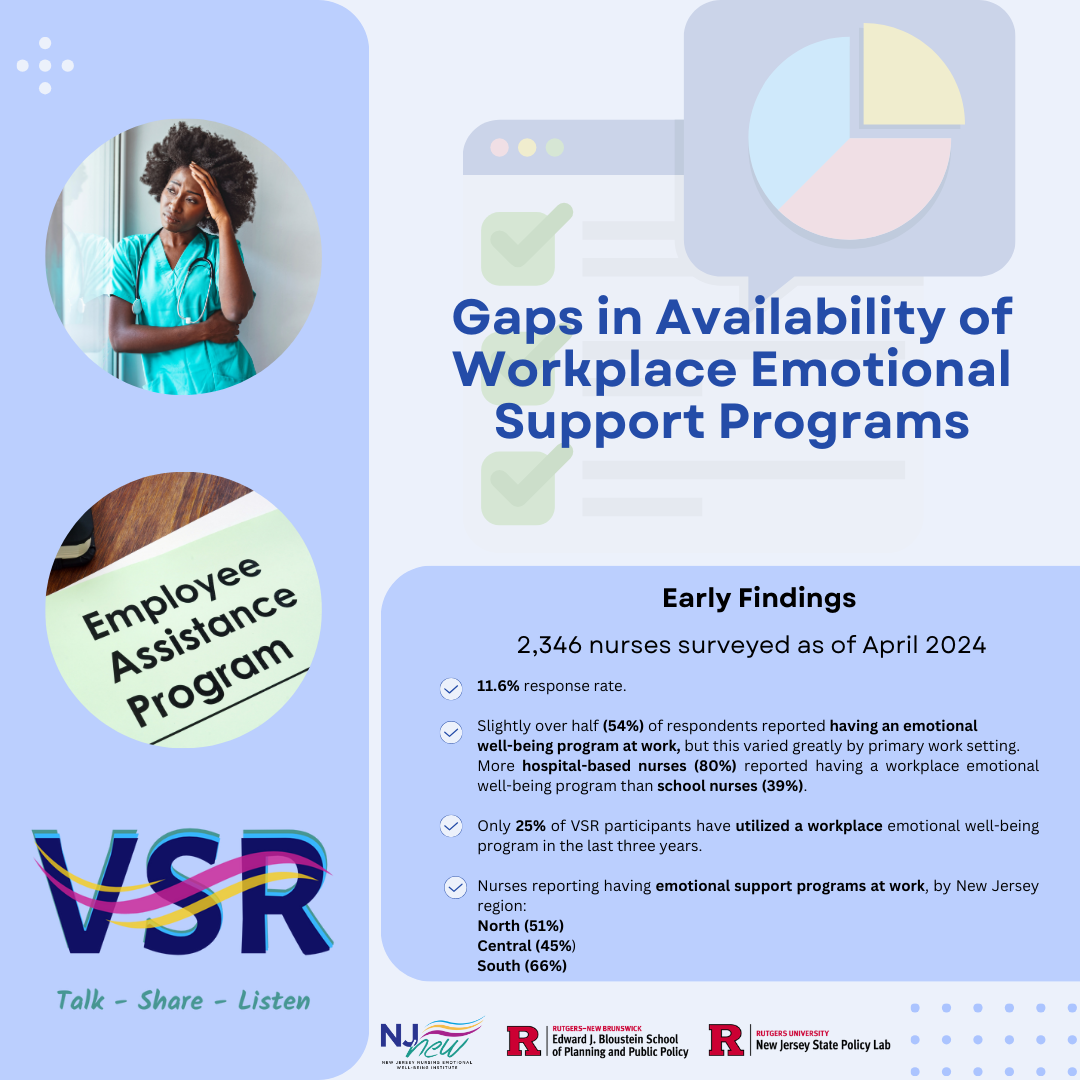Are workplace emotional well-being programs available for New Jersey nurses? To answer this question, on April 23, 2024, we launched a statewide survey targeting nurses who attended the Virtual Schwartz Rounds (VSR) emotional support program. We aimed to understand more about the nurses interested in improving their well-being by accessing peer-to-peer support.
Out of 2,346 nurses who, over the past three years, registered for at least one VSR session, currently 273 (11.6%) nurses responded to our survey invitation. We queried nurses about the utilization of emotional well-being services and programs, including the availability and utilization of workplace emotional well-being programs.

Not surprisingly, only 54% of the respondents reported having a workplace emotional well-being program and the availability of these workplace emotional well-being programs varied drastically by specialty. For example, only 39% of school nurses reported having a workplace emotional well-being program compared to 80% of nurses who work in hospitals. While a high number of hospital nurses reported that they have an emotional well-being program in place, this number does not reflect how many nurses access these programs.
In fact, of those who reported having access to a workplace emotional well-being program, 52% utilized it in the past three years. This highlights the need for state-level, non-employer based-programs, such as the VSR, that are open to nurses regardless of specialty or work environment.
There were also regional differences in accessing the workplace emotional support programs. For example, fewer nurses reported having a workplace emotional support program in North (51%) and Central (45%) New Jersey than in South (66%) New Jersey. Nonetheless, the fact that on average more than ½ the nurses in New Jersey have access to emotional support programs either through their employment or through non-employer-based programs such as VSR is promising.
Overall, there still remains a need to increase emotional support program availability and more importantly, make nurses aware of the availability of such programs. Since all nurses in our sample have previously registered for the VSR, these nurses are making an effort to seek and attend emotional well-being support. This does not account for nurses who don’t have access to emotional support programs at their place of employment and do not know about the VSR programs. Our results underscore significant inequities in the availability of workplace emotional well-being support services for nurses and indicate the need for improved access to these programs.
